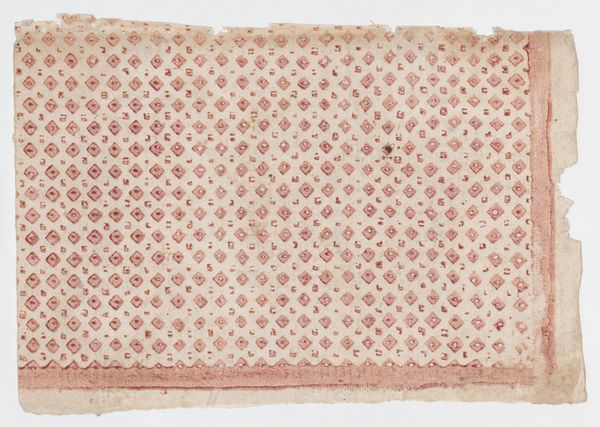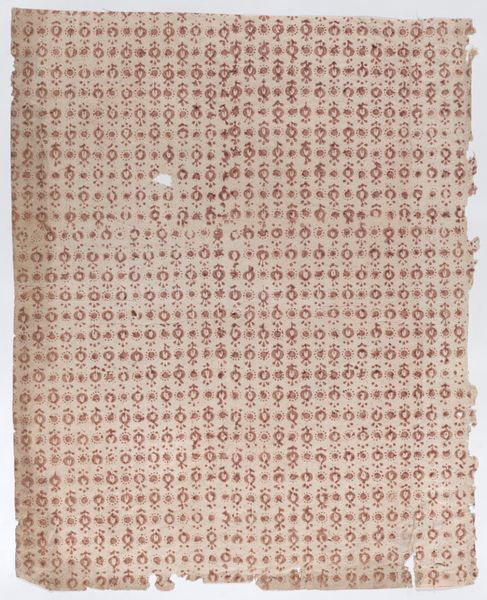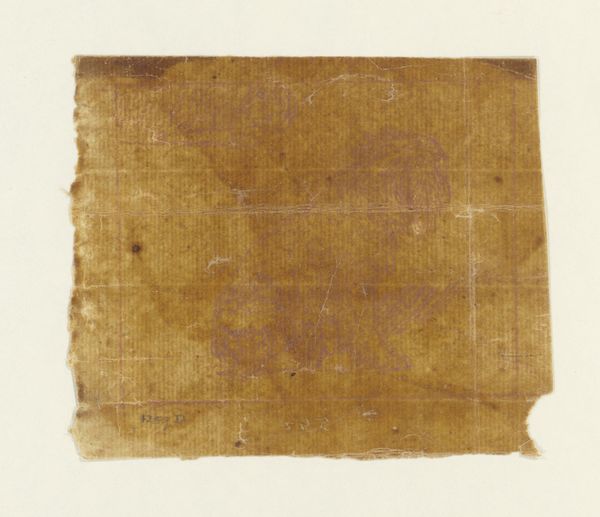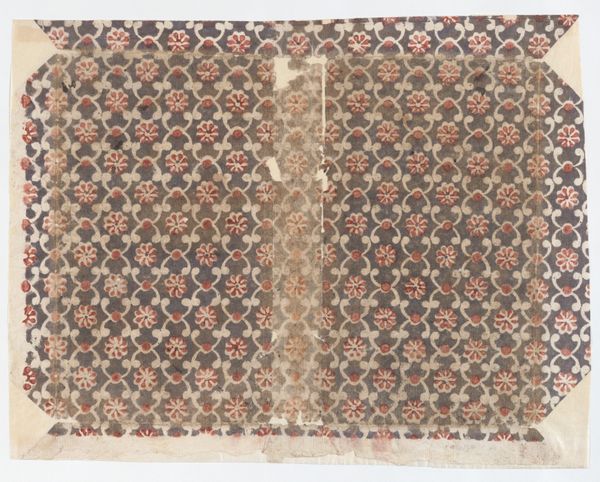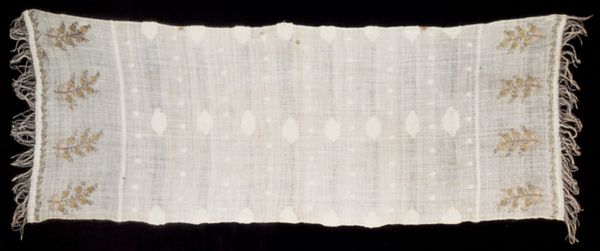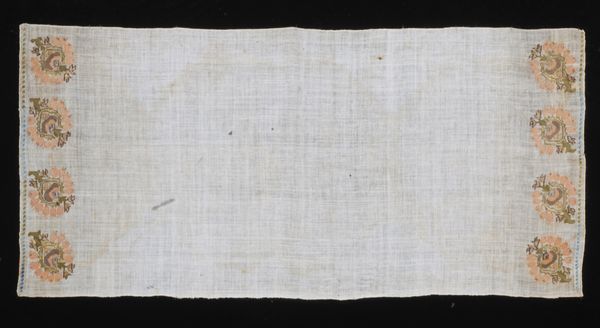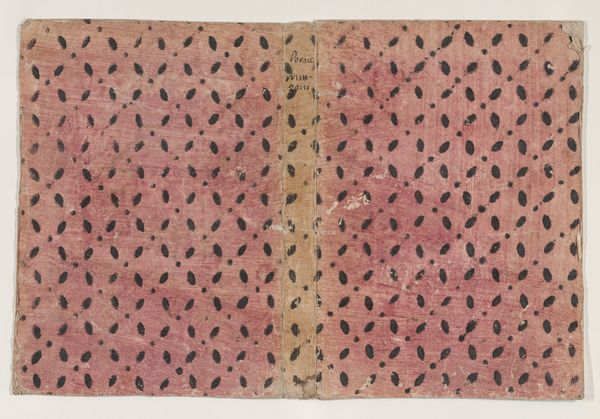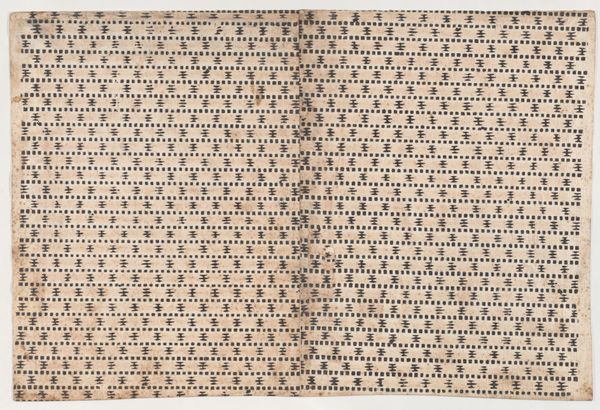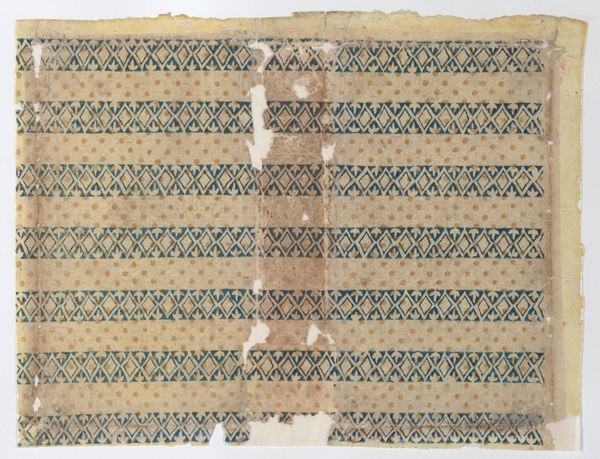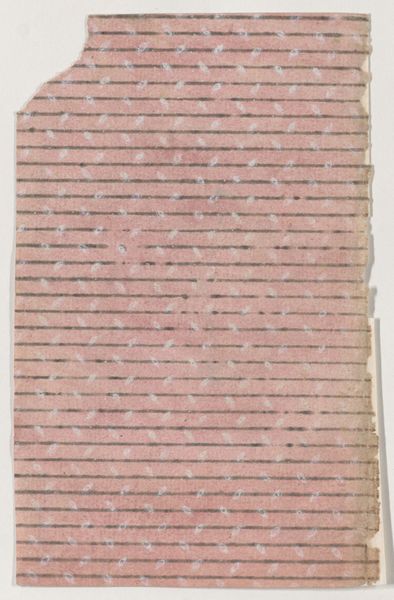
Sheet with overall pattern of dots and arrow shapes 1800 - 1900
0:00
0:00
drawing, print, textile, paper, watercolor
#
drawing
# print
#
textile
#
paper
#
watercolor
#
organic pattern
#
geometric
#
watercolor
Dimensions: Sheet: 4 3/4 × 6 15/16 in. (12 × 17.6 cm)
Copyright: Public Domain
Editor: Here we have an anonymous artwork, created sometime between 1800 and 1900. It’s a patterned sheet of paper featuring watercolors, seemingly designed for textile or print applications. I’m immediately drawn to the repetitive motif – a combination of simple dots and shapes reminiscent of arrows. It feels almost like coded information. How do you interpret this piece, especially considering its historical context? Curator: That's a great observation about coded information. Given the period, I see this piece deeply embedded within the burgeoning world of industrialization and its effects on design. The consistent repetition and the relatively simple design speak to the mechanization of textile production that was taking hold in the 19th century. Editor: That makes sense. Were such designs considered artistic or merely functional at the time? Curator: It's a fascinating question. The line between art and function was blurrier than we often assume today. While high art was valorized in academies and salons, patterns like these played a crucial role in democratizing aesthetics. They brought design to the masses, impacting domestic life through wallpaper and clothing. Editor: So it's art as a tool for social change, almost? Making aesthetics accessible? Curator: Precisely. Also, consider who the ‘anonymous’ artist might have been. Was it a professional designer employed by a textile mill? A woman creating designs for her home? The social and economic position of the artist shaped the design's possibilities and reach. It serves as a window into understanding taste, class and production networks of the time. Editor: This piece becomes much more complex when you consider all those aspects of it! I came in thinking it was a simple design, but there's an entire world behind those little arrows and dots. Curator: And that’s precisely why contextualizing art is crucial. By exploring its history and societal functions, we can uncover rich stories and connections we might otherwise overlook.
Comments
No comments
Be the first to comment and join the conversation on the ultimate creative platform.
